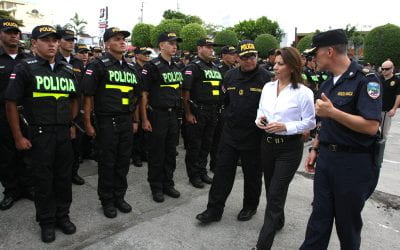Cloudy Horizons in the Costa Rican Caribbean
Identity and Architecture

I was raised in Limón, the poorest province in Costa Rica, with the lowest human development index and the highest rate of self-destruction among young people, according to the National Institute of Statistics (INEC). However, despite the limited opportunities, I decided to return to the town of Punta Uva after graduating as an architect from the Veritas University in San José, Costa Rica. Determined to make a difference, I established the first local architecture studio in the southern Caribbean.
My mission is to preserve cultural identity and promote sustainable tropical development throughout the country. As one of the few Afro-descendant architects in Costa Rica, I feel a great responsibility to give voice to the community, which is often ignored.

My commitment to meaningful development and community participation in planning activities is crucial to fostering sustainable and equitable societies, strengthening local economies, and preserving cultural identity. In 2013, a change in legislation threatened to evict 8,300 people living within 200 meters (656 feet) of the coast between Cahuita and Manzanillo. Among them were the last Afro-descendant families, settled on the Caribbean coast since the 1900s and still facing challenges in accessing justice and land rights.

In 2014, I joined a group of law students from Northeastern University with whom we created the NGO called the Rich Coast Project. As co-director, we created a digital archive documenting the history and struggles of our Afro-Caribbean community through interviews, old photographs, and temporary exhibitions. This platform empowered community members to defend their land rights, educated new residents and generations about our history, and the importance of cultural preservation.
The Project aims to amplify the voices of Afro-native peoples, sharing their perspectives on changes in the South Caribbean over time. Social and environmental pressures, such as population growth, urbanization, racism, lack of planning, political neglect, and the risk of an exclusive regulatory plan, represent threats not only to our identity and land rights but also to the ecological integrity of Talamanca. The Rich Coast Project seeks to authentically portray the lived experiences of Afro-Caribbean locals and their evolving relationship with our shared home, the South Caribbean. Through documentation, exchange, and amplification of their voices, we seek to provide them with a platform for their perspectives on the changes occurring in our community. This has allowed us to expose both the positive and negative aspects, as well as address their aspirations and concerns about the future.
Talamanca is the most forested region of the Mesoamerican Biological Corridor and one of the 36 biodiversity hotspots on Earth according to the Critical Ecosystem Partnership Fund (2019), and one of the most culturally diverse areas of Costa Rica (More than 47 different nationalities made this area their home between the Cahuita and Manzanillo coasts). But this has been replaced by unplanned development, such as the Airbnb industry, which has led to a loss of community sense and displaced residents to other areas due to rent increases and real estate speculation; it has caused land prices to double in an 8-year period and has led locals to sell their land.
As an Afro-descendant living in Talamanca, it is crucial to recognize the historical context that shaped our community. Our ancestors were forcibly brought to the Americas between the 1500s and 1800s, through the transatlantic slave trade that saw millions of Africans trafficked to what is now America. In the subsequent period, successive generations endured further hardships. The Costa Rican government, seeking labor for the construction of the railroad, chose to bring in workers from Jamaica. These individuals faced harsh conditions, but many stayed, laying the foundations for what would become Limón. Through this migration, Costa Rica absorbed a rich tapestry of culture and traditions, which deeply influenced our architecture and way of life. It is necessary to honor and preserve this legacy, recognizing the resistance they faced and the contributions of these communities to our shared heritage.

Costa Rica and Panama emerged as banana production centers in Latin America and the Caribbean in the late 19th century, thanks to the flow of skilled workers, around 14,000 to 15,000, who played a crucial role in agriculture, especially after the completion of the railway network. Limón went from being a swampy outpost in the 1880s to being the first city in Costa Rica with modern infrastructure in the early 20th century driven by the presence of the United Fruit Company (UFCO). Thus, it became the first city in the country with paved streets, more effective sewerage systems, and water supply. However, this progress was not free, it came at a high cost; the construction of the railroad tragically took thousands of lives, leaving a complex legacy of social and environmental impact.

The United Fruit Company had a significant impact on several countries in Central America and the Caribbean in the late 19th century. In Costa Rica, the economic consequences included labor exploitation and environmental impact. The architecture of the time, adapted to the tropical climate, reflected a mix of Western and local influences. Materials such as wood were used, with high ceilings for ventilation and water drainage. Constructions were designed with rectangular pieces and reduced internal circulations to facilitate airflow, and elements such as corridors, balconies, and adequate ventilation systems were incorporated. Cities emerged as agro-industrial cities, designed to integrate production, housing, and administrative facilities. Although it mainly focused on economic productivity, architecture also reflected adaptation to the natural environment and the needs of the inhabitants. Today, it is essential to remember the history and architectural and construction elements of this period, as well as consider how these concepts can be sustainably applied in contemporary design, maintaining a balance between uniformity and diversity, and considering aspects such as tradition, culture, and the local environment. These cities amidst plantations, conceived by American and European engineers, represent a mestizo urbanism and architecture, born of the commitment between a modern Western conception of planning and the extreme conditions of a tropical country. The chosen lands, their relief, vegetation, fauna, and flora, but above all, the climate (rain, sun, humidity, wind, heat), modified, transformed, and enriched an imported architecture that corresponds to a different culture and construction processes.
- High ceilings are used for heat and rapid water drainage.
- Construction on stilts to protect structures from moisture, animals, and floods.
- Bright and cheerful or sober colors in harmony with nature.
- Interiors with Bright colors for more natural lighting.
- Openings in roofs (monitors) for heat evacuation.
- Wood as a construction material, using different species for their structural and aesthetic characteristics. Costa Rica’s climate and fertile soil produce a large and diverse amount of wood.
- Ventilation systems (cross ventilation not exceeding 15 meters between facades).
- Steep inclination of roof elements (due to large surfaces).
- Structural system of wooden posts and beams, therefore, a simple construction system.
- Roofs with two or more slopes to ensure rapid drainage of rainwater and thermally insulate the house.
- Doors and windows with wooden shutters and frames, and sometimes ventilation shutters separating walls from ceilings to use air without direct sunlight.
- Rectangular plants with reduced internal circulations (to avoid closures that limit airflow).
- Corridors, eaves, peripheral balconies, and all kinds of protected outdoor spaces for the use of ventilated spaces and with a strong relationship with the context/nature.
The trend in construction and design in the area focuses on standardization, protection, cost, time, etc. However, forgetting simple concepts such as shelter, noise, smallness, quality, comfort, views, joy, clarity, traditions, culture, etc., can lead to architecture without taste, contextualized, and of little contribution to a specific place. Architecture is not only a matter of pride; it is an affirmation of identity. Neglecting culture is abandoning a vital part of who we are. It is crucial to recognize the significant contributions that our Afro culture has made to our society. However, it is discouraging that despite these contributions to the country’s development, there continues to be an evident absence of land rights both in Costa Rica and the 134 million Afro-descendants in Latin America. Recent findings from the United Nations Economic Commission for Latin America and the Caribbean (ECLAC) paint a bleak picture of our reality mired in poverty, plagued by inequality, and deprived of fundamental services. As a local activist in the field of architecture and a member of the founding Afro families of the South Caribbean, I am positioned to advocate for sustainable development, establish design standards that honor our cultural heritage, and imprint the essence of Afro heritage on Costa Rica’s architectural landscape. In the words of Marcus Garvey, “A people without the knowledge of their past history, origin, and culture is like a tree without roots.” It is our duty to delve into our past, understand our origins, and value our cultural heritage, as it is the foundation upon which our future is built.

Markus Brown is an architect from Costa Rica’s Caribbean coast. He is co-director of the Rich Coast Project.
Related Articles
Homecoming and Public Education: The Cancel Culture (of class time) in Costa Rica
When I returned home on my sabbatical, I couldn’t stop thinking about Svetlana Boym’s extraordinary book, El futuro de la nostalgia.
Crisis of Citizen Insecurity in Costa Rica: A Challenge to the Model of Demilitarized Democracy
I began my political and public service career thirty years ago as Minister of Public Security, the first woman to ever hold that post in my country, Costa Rica.
Editor’s Letter: Is Costa Rica Different?
Is Costa Rica different?





